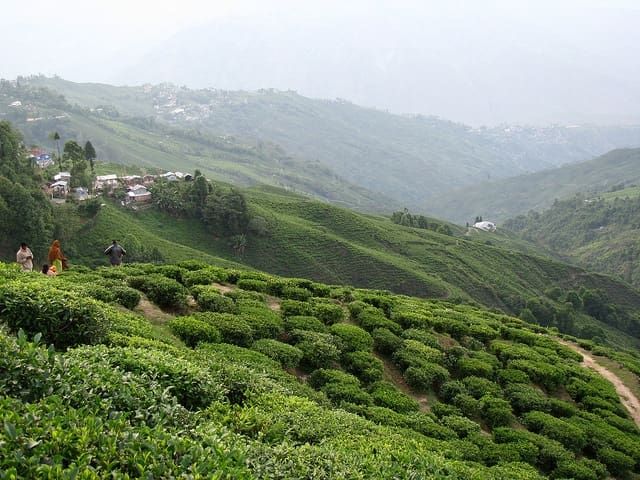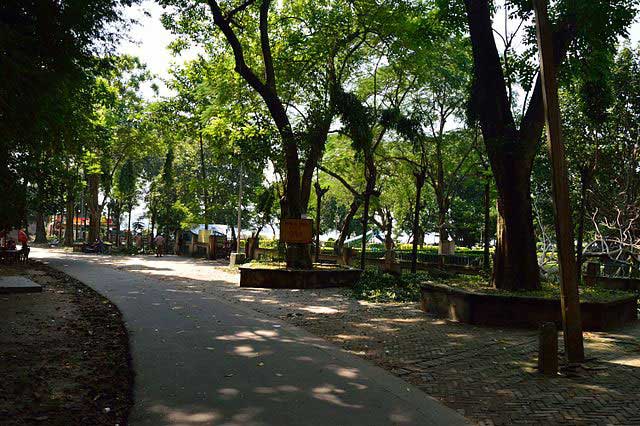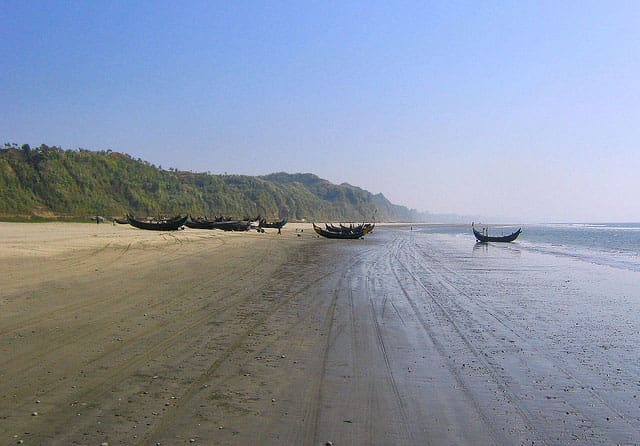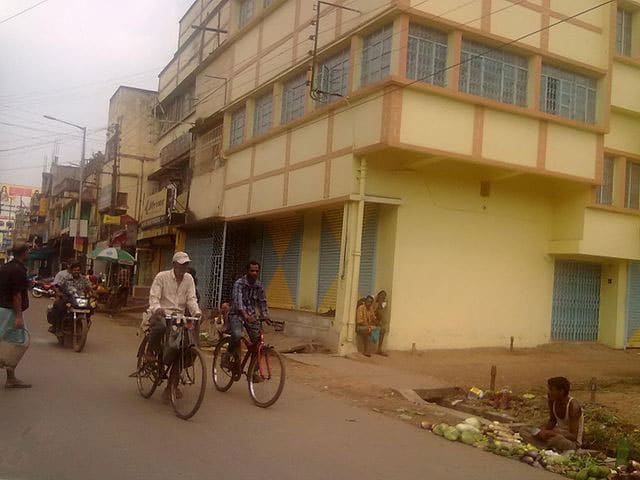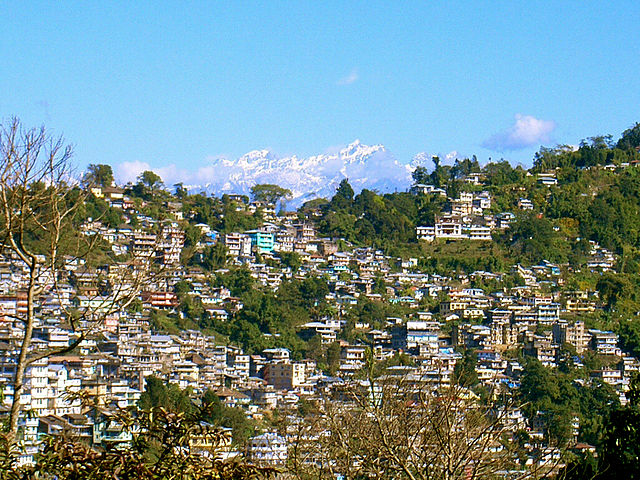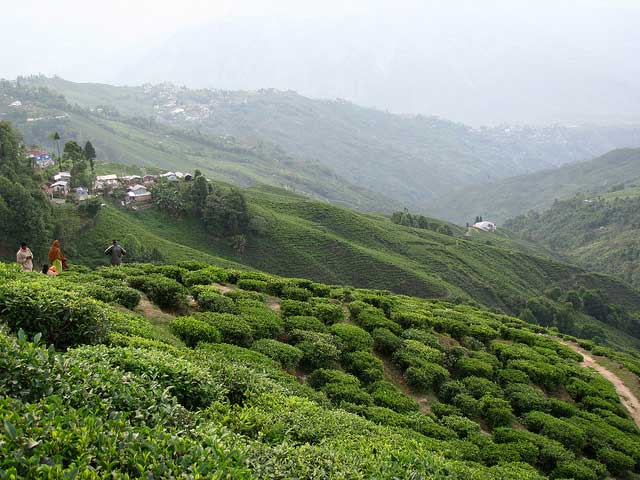Cooch Behar, a picturesque district in the northeastern state of West Bengal, India, is steeped in history, culture, and natural beauty. Known for its rich heritage, architectural marvels, and serene landscapes, this region offers travelers an unforgettable experience. Whether you are a history enthusiast, a nature lover, or someone seeking spiritual solace, Cooch Behar has something unique to offer. In this comprehensive guide, we delve into the top 5 places to visit in Cooch Behar , exploring their historical significance, cultural relevance, and scenic charm.
The Magnificent Cooch Behar Palace: A Testament to Royal Legacy
Historical Background
The Cooch Behar Palace , also known as the Victorian Memorial Palace , stands as one of the most iconic landmarks in the region. Built in 1887 during the reign of Maharaja Nripendra Narayan, this architectural masterpiece reflects the grandeur of the Koch dynasty. Modeled after Buckingham Palace in London, it serves as a symbol of the opulence and sophistication of the erstwhile royal family. The palace was constructed under the supervision of Sir Martin Burn & Co., a renowned British construction firm, which ensured that the design adhered to European standards while incorporating local elements.
The Koch dynasty ruled over parts of present-day Assam, West Bengal, and Bangladesh for centuries. Their influence on art, architecture, and governance left an indelible mark on the region. The Cooch Behar Palace not only represents the zenith of their power but also serves as a reminder of the cultural synthesis between Indian traditions and Western influences during colonial times.
Architectural Brilliance
Constructed with bricks and marble imported from Italy, the palace spans over 51,309 square feet and boasts intricate designs that blend European and Indian styles seamlessly. The building’s facade features Corinthian pillars, arched doorways, and ornate balconies reminiscent of Victorian-era architecture. Inside, visitors are greeted by lavish interiors adorned with exquisite chandeliers, wooden floors, and stained-glass windows. Every corner of the palace exudes elegance, making it a visual treat for architecture enthusiasts.
One of the standout features of the palace is its sprawling garden, meticulously maintained to complement the structure’s regal appearance. The manicured lawns, flower beds, and fountains create a serene environment that invites visitors to linger and soak in the beauty of the surroundings. The symmetry of the design and attention to detail make the Cooch Behar Palace a must-visit destination for anyone interested in architectural wonders.
Visitor Experience
For those who appreciate history and architecture, the Cooch Behar Palace offers an immersive experience. Guided tours provide insights into the lives of the royal family, their contributions to art and culture, and their role in shaping the region’s identity. The museum housed within the palace showcases artifacts, photographs, and relics from the Koch dynasty, offering a glimpse into their opulent lifestyle. Visitors can explore personal belongings of the royals, including furniture, clothing, and jewelry, which have been preserved meticulously over the years.
Photography enthusiasts will find endless opportunities to capture stunning images of the palace and its surroundings. The interplay of light and shadow on the marble surfaces, combined with the vibrant hues of the gardens, creates a perfect setting for memorable shots. Additionally, the palace often hosts cultural events and exhibitions, providing visitors with a chance to engage with local traditions and customs.
Best Time to Visit
The best time to visit the palace is between October and March when the weather is pleasant. During this period, the gardens are in full bloom, creating a vibrant backdrop for your visit. Early mornings and late afternoons are ideal for photography due to the soft lighting conditions. If you’re planning to attend any special events or festivals held at the palace, check the schedule in advance to ensure availability.
Additional Insights
While the palace itself is the main attraction, the surrounding area also deserves exploration. Nearby markets sell traditional handicrafts, textiles, and souvenirs, allowing visitors to take home a piece of Cooch Behar’s rich heritage. Local guides are available to enhance your understanding of the palace’s history and significance, making your visit even more enriching.
Madan Mohan Temple: A Spiritual Haven
Religious Significance
The Madan Mohan Temple is one of the most revered shrines in Cooch Behar, attracting devotees from across the country. Dedicated to Lord Madan Mohan, an incarnation of Lord Krishna, the temple holds immense religious importance. It is believed that worshipping here brings peace, prosperity, and divine blessings. Devotees flock to the temple throughout the year, especially during auspicious occasions like Janmashtami and Radha Ashtami.
According to legend, the idol of Lord Madan Mohan was discovered in a nearby pond and later installed in the temple by the Koch rulers. Over the centuries, the temple has become a focal point for spiritual seekers and pilgrims, drawing people from diverse backgrounds.
Architectural Splendor
Built-in traditional Bengali style, the temple features terracotta carvings depicting scenes from Hindu mythology. Its intricate craftsmanship and vibrant colors make it a visual delight. The temple complex includes several smaller shrines dedicated to other deities, offering visitors a holistic spiritual experience. Each carving tells a story, ranging from tales of gods and goddesses to depictions of daily life in ancient times.
The temple’s architecture reflects the region’s artistic heritage, blending simplicity with elegance. The curved roof, typical of Bengali temples, adds to its charm, while the open courtyard provides ample space for gatherings and rituals. Pilgrims often spend hours admiring the details of the carvings and reflecting on their deeper meanings.
Annual Festivals
One of the highlights of visiting the Madan Mohan Temple is witnessing the grand celebrations during festivals like Durga Puja and Rath Yatra . These events draw thousands of pilgrims and tourists, transforming the area into a hub of cultural festivities. During Durga Puja, elaborate pandals (temporary structures) are erected around the temple, showcasing creative themes and designs. The air resonates with chants, music, and laughter, creating an atmosphere of joy and devotion.
Similarly, Rath Yatra sees the procession of chariots carrying idols of Lord Jagannath, Balabhadra, and Subhadra through the streets of Cooch Behar. Devotees pull the ropes attached to the chariots, believing that participating in the event will cleanse their sins and bring them closer to divinity.
Visitor Tips
To fully immerse yourself in the spiritual ambiance, plan your visit early in the morning or late in the evening when the crowd is thinner. Dress modestly and carry offerings such as flowers or sweets to present at the shrine. Many visitors choose to perform puja (prayer rituals) conducted by priests, which can be arranged upon request. For a more personalized experience, consider hiring a guide who can explain the significance of various rituals and ceremonies.
Nearby Attractions
After visiting the Madan Mohan Temple, take some time to explore the surrounding areas. The nearby market offers a variety of religious items, including incense sticks, prayer beads, and idols. You can also sample traditional Bengali snacks and sweets sold by street vendors. For those interested in history, the Cooch Behar Museum, located a short distance away, houses artifacts related to the Koch dynasty and local culture.
Sagar Dighi: A Serene Waterbody
Natural Beauty
Nestled in the heart of Cooch Behar town, Sagar Dighi is a large rectangular pond surrounded by lush greenery and ancient temples. This tranquil waterbody serves as a popular retreat for locals and tourists alike. Its calm waters reflect the surrounding landscape, creating a mesmerizing sight. The pond’s name, “Sagar,” means ocean in Sanskrit, signifying its vastness and importance in the region’s history.
During sunrise and sunset, the sky transforms into a canvas of colors, casting reflections on the water’s surface. The gentle breeze rustling through the trees and the chirping of birds add to the serenity of the place. Whether you’re looking for a peaceful escape or a spot to connect with nature, Sagar Dighi offers the perfect setting.
Historical Importance
Sagar Dighi has been a part of Cooch Behar’s history for centuries. It was once used as a reservoir to meet the water needs of the royal palace and nearby settlements. Today, it remains a symbol of the region’s sustainable practices and harmonious coexistence with nature. Historical records suggest that the pond played a crucial role in irrigation and agriculture, supporting the livelihoods of countless families.
Over time, Sagar Dighi became a gathering place for social and religious activities. Festivals like Chhath Puja, celebrated in honor of the Sun God, attract large crowds to the pond. Devotees offer prayers and perform rituals on the banks, seeking blessings for health and prosperity.
Recreational Activities
Visitors can enjoy boating on the lake or simply relax under the shade of towering trees. The area around the pond is ideal for picnics, morning walks, and birdwatching. If you’re lucky, you might spot migratory birds flocking to the region during winter. Species such as kingfishers, herons, and ducks are commonly seen along the water’s edge.
For fitness enthusiasts, jogging tracks encircle the pond, providing a refreshing route for exercise. Families often gather here on weekends to spend quality time together, enjoying the fresh air and scenic views. Children can play in designated areas, while adults unwind on benches scattered throughout the premises.
Photography Opportunities
With its picturesque setting and serene atmosphere, Sagar Dighi provides ample opportunities for capturing stunning photographs. Don’t forget to bring your camera to document the beauty of this hidden gem. Experiment with different angles and perspectives to capture the essence of the pond and its surroundings. Early mornings and late evenings offer the best lighting conditions, enhancing the vibrancy of your images.
Conservation Efforts
Local authorities have implemented measures to preserve the ecological balance of Sagar Dighi. Regular cleaning drives ensure that the water remains free of pollutants, while awareness campaigns educate residents about the importance of protecting natural resources. Visitors are encouraged to respect the environment by avoiding littering and minimizing noise pollution.
Rajpat Mound: Unearthing Ancient History
Archaeological Significance
Located near the village of Rajpat, approximately 20 kilometers from Cooch Behar town, Rajpat Mound is an archaeological site that dates back to the medieval period. Excavations have unearthed remnants of ancient structures, pottery, and coins, shedding light on the region’s past. Archaeologists believe that it was once the site of a fortified palace belonging to the Koch kings, serving as a center of administration and defense.
The mound’s strategic location atop a hill provided a vantage point for monitoring enemy movements and safeguarding the kingdom. Remnants of walls, bastions, and moats indicate the presence of a well-planned fortification system. Artifacts recovered from the site include terracotta figurines, metal tools, and inscriptions, offering valuable insights into the socio-economic conditions of the era.
Exploration Highlights
While the mound itself may not appear striking at first glance, its historical value makes it worth exploring. Walking through the ruins evokes a sense of wonder about the lives of people who inhabited this land centuries ago. Fragments of pottery and brickwork scattered across the site serve as tangible reminders of a bygone era.
A short hike leads to the top of the mound, where panoramic views of the surrounding countryside unfold. Rolling hills, verdant fields, and distant villages stretch as far as the eye can see, creating a breathtaking panorama. On clear days, you might even catch glimpses of the Himalayan range in the background.
Guided Tours
To gain a deeper understanding of the site, consider hiring a local guide who can share fascinating stories and insights about the excavations. They can also point out lesser-known details that might otherwise go unnoticed. Guides often highlight specific areas of interest, such as burial sites, storage pits, and ceremonial platforms, enriching your overall experience.
Preservation Efforts
Efforts are underway to preserve and restore the mound, ensuring that future generations can learn about Cooch Behar’s rich heritage. Local authorities collaborate with archaeologists and historians to conduct systematic studies and implement conservation strategies. Funding from government agencies and non-profit organizations supports these initiatives, enabling sustained progress.
Visitors are encouraged to respect the site and avoid causing any damage. Simple actions like refraining from climbing fragile structures, not removing artifacts, and disposing of waste responsibly contribute significantly to preservation efforts.
Nearby Attractions
After exploring Rajpat Mound, venture further into the countryside to discover other hidden gems. Traditional villages dot the landscape, offering a glimpse into rural life in Cooch Behar. Interact with friendly locals, observe age-old farming techniques, and savor homemade delicacies prepared using fresh ingredients. Nature trails lead to secluded spots where you can reconnect with the tranquility of the wilderness.
Tufanganj Wildlife Sanctuary: A Paradise for Nature Lovers
Biodiversity Hotspot
Situated about 60 kilometers from Cooch Behar town, the Tufanganj Wildlife Sanctuary is a haven for wildlife enthusiasts. Spread across 111 square kilometers, the sanctuary is home to diverse flora and fauna, including rare species like the Indian bison, leopards, and various migratory birds. Dense forests, grasslands, and wetlands create a thriving ecosystem that supports countless organisms.
The sanctuary’s varied terrain includes hilly regions, riverine tracts, and marshy areas, each harboring distinct habitats. Towering sal trees dominate the canopy, providing shelter to arboreal creatures like monkeys and squirrels. Bamboo groves thrive in shaded pockets, while medicinal plants grow abundantly along forest paths.
Flora and Fauna
The dense forests of Tufanganj are teeming with life. Towering sal trees, bamboo groves, and medicinal plants create a thriving ecosystem. Birdwatchers will be delighted to spot species such as hornbills, eagles, and kingfishers amidst the verdant foliage. Mammals like deer, wild boars, and porcupines roam freely, while reptiles like snakes and lizards bask in sunny clearings.
Aquatic ecosystems within the sanctuary support fish, amphibians, and insects, contributing to the region’s biodiversity. Seasonal variations bring changes in vegetation patterns, influencing animal behavior and migration routes. Observing these dynamics firsthand offers a unique perspective on the interconnectedness of life forms.
Adventure Activities
For adventure seekers, the sanctuary offers activities like jungle safaris, trekking, and camping. Exploring the wilderness on foot allows you to connect with nature on a deeper level while spotting elusive animals in their natural habitat. Trained guides accompany groups, ensuring safety and maximizing chances of encountering wildlife.
Jungle safaris conducted in open-top vehicles traverse designated routes, offering close encounters with animals without disturbing their routines. Night safaris provide a thrilling opportunity to witness nocturnal creatures like owls, civets, and hyenas. Camping facilities are available for those wishing to extend their stay, complete with basic amenities and security arrangements.
Conservation Initiatives
The sanctuary plays a crucial role in conserving endangered species and maintaining ecological balance. Local authorities work tirelessly to protect the environment and promote sustainable tourism practices. Anti-poaching squads patrol the area regularly, deterring illegal activities and safeguarding wildlife populations.
Community involvement is integral to conservation efforts. Villagers living near the sanctuary participate in awareness programs, learning about the importance of preserving natural resources. Eco-friendly initiatives like waste management systems and renewable energy projects reduce human impact on the ecosystem.
Visitor Guidelines
Before embarking on your journey, ensure you obtain necessary permits and adhere to safety guidelines. Hiring a knowledgeable guide enhances your experience and ensures minimal disturbance to the wildlife. Pack essentials like water bottles, sunscreen, insect repellent, and sturdy footwear to prepare for outdoor adventures.
Respect the rules set by park authorities, such as maintaining silence, staying on marked trails, and refraining from feeding animals. Responsible behavior helps maintain the sanctuary’s pristine condition and ensures a positive experience for all visitors.
Best Nearby Attractions
Cooch Behar’s strategic location in North Bengal makes it a gateway to several nearby attractions that are equally captivating. These destinations complement your visit to Cooch Behar, offering diverse experiences ranging from wildlife adventures and scenic landscapes to cultural immersion. Here’s a detailed exploration of the best nearby attractions:
Jalpaiguri: Famous for Tea Gardens and Wildlife Sanctuaries
Jalpaiguri , located approximately 100 kilometers from Cooch Behar, is a paradise for nature lovers and tea enthusiasts. The district is renowned for its sprawling tea gardens , which produce some of the finest teas in India. Visitors can take guided tours of these estates to learn about the intricate process of tea cultivation, plucking, and processing.
In addition to its lush greenery, Jalpaiguri is home to several wildlife sanctuaries , including the Chapramari Wildlife Sanctuary and the Jaldapara National Park . These reserves are teeming with biodiversity, housing species such as the Indian one-horned rhinoceros, elephants, bison, and numerous bird species. Safari rides through these parks provide thrilling encounters with wildlife in their natural habitats.
For those seeking tranquility, the Teesta River flowing through Jalpaiguri offers opportunities for river rafting, fishing, and picnicking along its banks. The region’s cool climate and serene ambiance make it an ideal weekend getaway.
Alipurduar: Gateway to Bhutan and Home to Gorumara National Park
Alipurduar , situated about 80 kilometers from Cooch Behar, serves as a crucial transit point for travelers heading to Bhutan. However, this town itself is brimming with attractions that deserve attention. One of its crown jewels is the Gorumara National Park , a UNESCO World Heritage Site nominee known for its rich flora and fauna.
The park is particularly famous for its population of the Indian one-horned rhinoceros , which can often be spotted during jeep safaris or elephant-back rides. Other notable inhabitants include leopards, deer, wild boars, and over 200 species of birds. The dense forests and grasslands create a picturesque setting, making Gorumara a haven for photographers and nature enthusiasts.
Beyond Gorumara, Alipurduar also boasts smaller but equally fascinating sanctuaries like the Chapramari Wildlife Sanctuary and the Buxa Tiger Reserve . These areas offer additional opportunities for wildlife spotting and exploration.
Darjeeling: Renowned for Its Himalayan Views and Toy Train Rides
No trip to North Bengal is complete without visiting Darjeeling , located roughly 200 kilometers from Cooch Behar. Known as the “Queen of Hills,” Darjeeling captivates visitors with its breathtaking views of the snow-capped Himalayas, including the majestic Kanchenjunga peak.
One of Darjeeling’s most iconic experiences is riding the Darjeeling Himalayan Railway , fondly called the “Toy Train.” This UNESCO-listed narrow-gauge railway winds its way through picturesque hills, valleys, and tea estates, offering panoramic vistas at every turn. The journey itself becomes a memorable part of the adventure.
Other must-visit spots in Darjeeling include the Tiger Hill for sunrise views, the Padmaja Naidu Himalayan Zoological Park for endangered species like red pandas and snow leopards, and the bustling Mall Road for shopping and dining. For spiritual seekers, the Peace Pagoda and various monasteries provide moments of reflection and serenity.
Kalimpong: Known for Flower Nurseries and Monasteries
Approximately 180 kilometers from Cooch Behar lies Kalimpong , a quaint hill station nestled amidst verdant slopes. Kalimpong is celebrated for its vibrant flower nurseries , where you can find exotic blooms like orchids, gladioli, and cacti. The town’s mild climate and fertile soil make it perfect for horticulture, and many nurseries welcome visitors to explore their colorful collections.
Kalimpong is also steeped in Tibetan Buddhist culture, evident in its numerous monasteries . The Zang Dhok Palri Phodang Monastery , perched on Durpin Hill, houses sacred relics brought from Tibet. Similarly, the Tharpa Choling Monastery offers stunning views of the surrounding valleys while providing insight into Buddhist teachings and practices.
For history buffs, the Deolo Hill and Morgan House are worth exploring. Deolo Hill provides sweeping views of the Teesta and Relli rivers, while Morgan House, a colonial-era mansion turned hotel, reflects the charm of British architecture.
Buxa Tiger Reserve: A Biodiverse Hotspot in North Bengal
The Buxa Tiger Reserve , located around 150 kilometers from Cooch Behar, is a critical conservation area in North Bengal. Spanning over 760 square kilometers, the reserve is home to a wide array of wildlife, including tigers, elephants, leopards, and rare avian species. It is part of the larger Eastern Himalayan biodiversity hotspot and plays a vital role in preserving endangered ecosystems.
Visitors can embark on jungle safaris to explore the reserve’s dense forests, bamboo groves, and wetlands. The Buxa Fort , located within the reserve, adds historical significance to the site. Once used as a prison by the British, the fort now stands as a reminder of India’s struggle for independence.
Adventure enthusiasts will appreciate the trekking trails that lead to scenic viewpoints like Jayanti and Pukhri Jhora Waterfall . These routes allow you to immerse yourself in the untouched beauty of the wilderness while encountering diverse flora and fauna.
Best Nearby Restaurants
When visiting Cooch Behar and its neighboring regions, indulging in local cuisine is a must. From traditional Bengali delicacies to international flavors, the following restaurants cater to every palate:
Hotel Pahari: Offers Authentic Bengali Cuisine
Located in the heart of Cooch Behar, Hotel Pahari is a favorite among locals and tourists alike. Specializing in authentic Bengali dishes, the restaurant serves mouthwatering preparations like machher jhol (fish curry), shorshe ilish (hilsa fish in mustard sauce), and luchi-alur dom (deep-fried bread with spiced potatoes). Their desserts, especially mishti doi (sweet yogurt) and rosogolla , are not to be missed.
The cozy ambiance and friendly staff make Hotel Pahari a welcoming place to savor regional specialties. Whether you’re craving comfort food or looking to try something new, this eatery promises a delightful culinary experience.
The Orchid Restaurant: Serves Multi-Cuisine Dishes
For those seeking variety, The Orchid Restaurant offers a multi-cuisine menu featuring Indian, Chinese, Continental, and local dishes. Located near the main market, the restaurant is known for its hygienic preparation and prompt service.
Popular items include butter chicken , chow mein , pasta Alfredo , and vegetable biryani . Vegetarians will appreciate the extensive range of plant-based options, while meat lovers can enjoy succulent kebabs and grilled items. The dessert section features both classic and fusion creations, ensuring there’s something for everyone.
Cafe Coffee Day: Perfect for Coffee Lovers
If you’re a coffee aficionado, head to Cafe Coffee Day , a popular chain found in major towns across North Bengal. Situated conveniently in Cooch Behar, CCD serves premium coffee blends alongside light snacks and beverages.
Signature drinks like cold coffee , cappuccino , and latte are crafted using high-quality beans sourced from sustainable farms. Pair your beverage with sandwiches, burgers, or pastries for a satisfying meal. The relaxed atmosphere and free Wi-Fi make it an excellent spot to unwind after a day of sightseeing.
Keventers: Known for Milkshakes and Snacks
A beloved name in North India, Keventers has made its mark in Cooch Behar with its signature milkshakes and quick bites. Established in 1923, the brand combines nostalgia with modern flair, offering creamy shakes in flavors like chocolate, mango, strawberry, and banana.
Alongside shakes, Keventers serves burgers, fries, and wraps, making it a go-to option for casual dining. Its vibrant decor and youthful vibe attract families, couples, and solo travelers alike. Don’t forget to grab a shake-to-go if you’re in a hurry!
Local Eateries: Try Traditional Delicacies Like Pithas and Fish Curry
To truly immerse yourself in the local culture, explore the small eateries scattered throughout Cooch Behar. These humble establishments serve homemade-style meals bursting with flavor. Must-try dishes include pithas (rice cakes stuffed with coconut or jaggery), ilish macher paturi (steamed hilsa wrapped in banana leaves), and chorchori (mixed vegetable stir-fry).
Street vendors also offer affordable yet delicious snacks like singara (samosa), telebhaja (fried fritters), and jhal muri (spiced puffed rice). Sampling these treats gives you a taste of everyday life in Cooch Behar.
Weather
Understanding the weather patterns of Cooch Behar is essential for planning a comfortable and enjoyable trip. The region experiences a subtropical climate characterized by distinct seasons:
Hot Summers (March to June)
During the summer months, temperatures in Cooch Behar can soar up to 38°C , accompanied by high humidity levels. Days are long and sunny, making outdoor activities challenging unless done early in the morning or late in the evening. Lightweight clothing, hats, sunglasses, and sunscreen are recommended during this period.
Despite the heat, summer brings vibrant festivals like Dol Jatra (Holi) and Poila Boishakh (Bengali New Year), adding color and energy to the town. If you don’t mind the warmth, this season allows you to witness unique cultural celebrations.
Monsoons (July to September)
The monsoon season transforms Cooch Behar into a lush green paradise, thanks to abundant rainfall averaging between 200-300 mm per month . While the rains bring relief from the scorching heat, they also result in muddy roads and occasional flooding. Travelers should pack waterproof gear, umbrellas, and sturdy footwear to navigate the wet conditions.
However, the monsoon season offers its own charm, with mist-covered landscapes and rejuvenated water bodies like Sagar Dighi . Photography enthusiasts will find plenty of inspiration in the dramatic skies and glistening foliage.
Mild Winters (October to February)
Winter is undoubtedly the best time to visit Cooch Behar, as temperatures remain pleasant, ranging from 10°C to 25°C . Cool breezes and clear skies create ideal conditions for sightseeing, trekking, and outdoor adventures. Nights can get chilly, so carrying light woolens or jackets is advisable.
This season coincides with major festivals such as Durga Puja , Diwali , and Christmas , filling the air with festive cheer. Markets buzz with activity, and streets come alive with decorations and lights, enhancing the overall travel experience.
Accessibility
Cooch Behar enjoys excellent connectivity via road, rail, and air, making it accessible to travelers from different parts of India and beyond. Here’s a breakdown of how to reach this charming destination:
By Air
The nearest airport is Bagdogra Airport (IXB) , located approximately 140 kilometers from Cooch Behar. Bagdogra operates regular flights connecting major cities like Kolkata, Delhi, Mumbai, and Guwahati. Upon arrival, you can hire a taxi or board a pre-booked cab to reach Cooch Behar, with the journey taking about 3-4 hours depending on traffic.
Alternatively, Siliguri Airport (CBD) , though smaller, is closer to Cooch Behar and serves limited domestic routes. Check flight schedules in advance to ensure smooth travel plans.
By Train
Cooch Behar boasts excellent rail connectivity through the New Cooch Behar Railway Station , which acts as a major railhead in the region. Several express and passenger trains link Cooch Behar to key cities such as Kolkata, Guwahati, Siliguri, and Alipurduar.
Popular trains include the Kamakhya-New Cooch Behar Intercity Express , Sealdah-New Cooch Behar AC Express , and Guwahati-New Cooch Behar Passenger . Booking tickets in advance, especially during peak seasons, ensures hassle-free travel.
By Road
Cooch Behar is well-connected by road, with regular bus services operated by state-run and private operators. The National Highway 31 (NH31) passes through Siliguri, facilitating easy access to Cooch Behar. Buses depart frequently from Siliguri, Jalpaiguri, and other nearby towns, with travel times varying based on distance.
Conclusion
Cooch Behar is a destination that effortlessly marries the past with the present, offering travelers an immersive experience steeped in history, spirituality, and natural beauty. Nestled in the northeastern corner of West Bengal, this region is more than just a stop on your itinerary—it’s a journey through time, culture, and untouched landscapes. From its architectural marvels to its serene water bodies and biodiverse sanctuaries, every aspect of Cooch Behar tells a story worth exploring.
A Glimpse into Royal Legacy
At the heart of Cooch Behar lies the Cooch Behar Palace , a symbol of royal opulence and cultural synthesis. This majestic structure, modeled after Buckingham Palace, stands as a testament to the grandeur of the Koch dynasty. Its intricate architecture, sprawling gardens, and museum artifacts transport visitors back to an era of kings and queens. Whether you’re an architecture enthusiast or simply someone who appreciates beauty, the palace offers an unforgettable experience that captures the essence of Cooch Behar’s rich heritage.
A Spiritual Retreat
For those seeking solace and divine connection, Cooch Behar does not disappoint. The Madan Mohan Temple , dedicated to Lord Krishna, is a spiritual haven that draws pilgrims and tourists alike. Its terracotta carvings and vibrant depictions of Hindu mythology are a feast for the eyes, while the peaceful ambiance invites introspection and prayer. Festivals like Durga Puja and Rath Yatra transform the temple into a hub of celebration, where devotion meets joy in a riot of colors, music, and rituals.
Nature’s Tranquil Embrace
If nature is your sanctuary, then Sagar Dighi and the Tufanganj Wildlife Sanctuary will leave you spellbound. Sagar Dighi, with its calm waters reflecting the sky, offers a serene escape from the hustle and bustle of daily life. Surrounded by lush greenery and ancient temples, it’s a perfect spot for picnics, morning walks, or simply soaking in the tranquility. Meanwhile, the Tufanganj Wildlife Sanctuary beckons wildlife enthusiasts with its diverse flora and fauna. From spotting elusive leopards to marveling at migratory birds, the sanctuary provides a front-row seat to the wonders of the natural world.
Unearthing Ancient Secrets
History buffs will find themselves captivated by the Rajpat Mound , an archaeological site that whispers tales of a bygone era. As you walk among the ruins, you’ll feel a deep connection to the past, imagining the lives of those who once called this place home. The mound’s strategic location also rewards visitors with breathtaking views of the surrounding countryside, making it both a historical and scenic gem.
Beyond Cooch Behar: Exploring Nearby Wonders
While Cooch Behar itself is brimming with attractions, its proximity to other enchanting destinations adds another layer to your travel experience. From the tea gardens of Jalpaiguri to the Himalayan vistas of Darjeeling , and the wildlife-rich forests of Alipurduar and Buxa Tiger Reserve , there’s no shortage of adventures awaiting just a short drive away. Each nearby attraction complements your visit to Cooch Behar, ensuring that your journey is as varied as it is memorable.
A Culinary Delight
No trip to Cooch Behar is complete without indulging in its culinary treasures. Whether you’re savoring authentic Bengali dishes at Hotel Pahari , enjoying multi-cuisine delights at The Orchid Restaurant , or relishing street food from local vendors, the flavors of Cooch Behar are sure to tantalize your taste buds. Traditional delicacies like machher jhol , shorshe ilish , and pithas offer a glimpse into the region’s rich gastronomic heritage.
Plan Your Journey Today
With its unique blend of history, spirituality, and natural splendor, Cooch Behar promises an experience unlike any other. Whether you’re planning a solo adventure, a family vacation, or a romantic getaway, this enchanting region has something for everyone. The best time to visit is during the mild winters (October to February), when the weather is pleasant, and the landscapes are at their most vibrant.
So why wait? Pack your bags, lace up your walking shoes, and embark on a journey to uncover the magic of Cooch Behar. Let the stories of its past inspire you, let its natural beauty rejuvenate you, and let its warm hospitality make you feel right at home. Discover the treasures of this hidden gem and create memories that will last a lifetime.
10 FAQ’s with Answers
- What is the best time to visit Cooch Behar?
Winter months (October to February) are ideal due to pleasant weather. - How far is Cooch Behar from Kolkata?
Approximately 530 kilometers by road. - Is Cooch Behar safe for solo travelers?
Yes, it is considered safe with friendly locals. - Are there accommodation options in Cooch Behar?
Yes, ranging from budget hotels to luxury resorts. - Can I visit all five places in one day?
It’s challenging; plan for at least two days. - What should I wear while visiting temples?
Modest clothing covering shoulders and legs is recommended. - Are guided tours available for these attractions?
Yes, local guides are available for hire. - What languages are spoken in Cooch Behar?
Bengali and Hindi are widely spoken. - Is photography allowed inside the palace?
Yes, but flash photography may be restricted. - What are some must-try foods in Cooch Behar?
Fish curry, rice, and traditional sweets like rasgulla.




